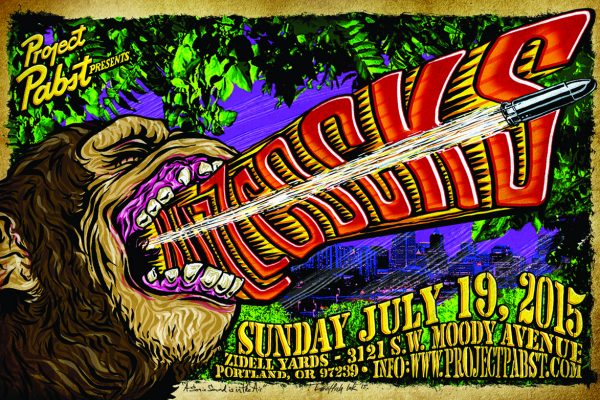Local Kids Learn Tabletop Games at Kensington Library Every Tuesday Afternoon
Tim Horras sits at a child-sized table covered with a hand-drawn dungeon map and character sheets, teaching a boy how to be a thief… but not the kind that robs stores.
As the children’s librarian at the Kensington Library (104 Dauphin St.), Horras hosts Dungeons and Dragons (D&D) games every Tuesday afternoon for a group of children. The map spread across the table serves as a representation of the dungeon in which the players navigate in their quest, also known as a campaign.
Horras describes the game as a “collective storytelling effort” where kids create characters set in a fantasy realm similar to that of Lord of the Rings where heroes (or anti heroes) quest for adventure and the acquisition of treasure.
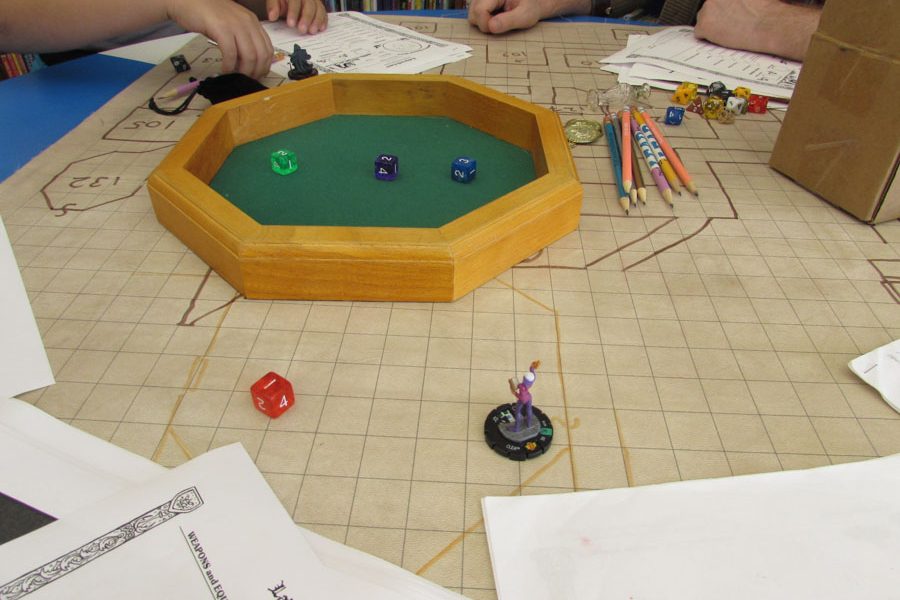
The Dungeons and Dragons board is set up and cluttered with figurines, character sheets and other props for enhancing the game experience./Ruthann Alexander
Figurines resembling cloak-and-dagger thieves, battle-hardened warriors, wise wizards and monsters are placed on the map, and children roll a set of dice to determine which abilities they can use while battling monsters and moving throughout the dungeon. Depending on the sum of the numbers on the dice, the players will either succeed or fail in their action.
These figurines mark progress on the board, Horras said. Behind each door could be a trap, treasure or goblins. Players do not know until they make their move to enter a door or go in another direction.
The world of D&D is random, and Horras is the Game Master, or GM. While he does not have a character, his role is to narrate the story for the players, tell them which monsters or treasure are behind which doors and to determine who moves next. As the GM, Horras brings props such as “gold coins” and small “potion” bottles for players to use for restoring their characters’ stats.
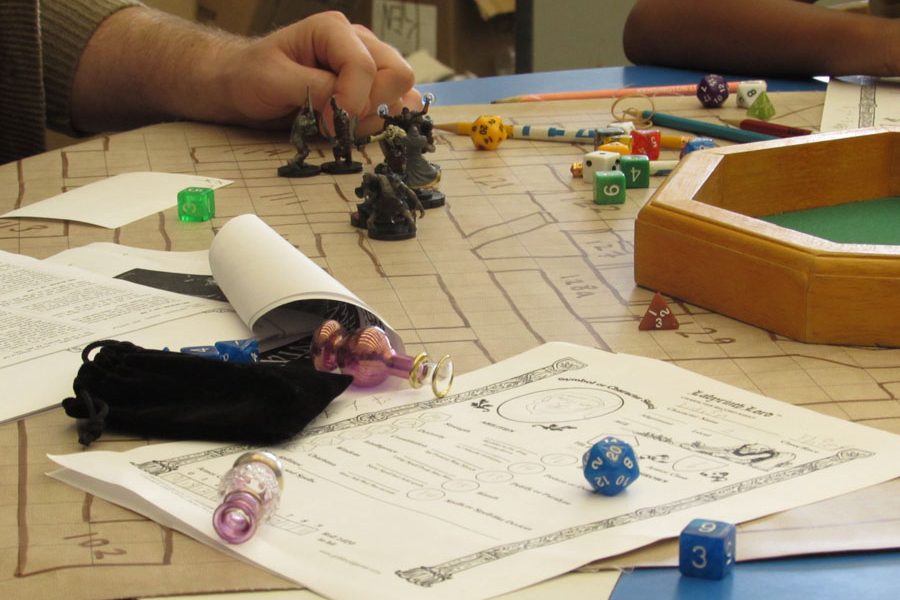
The dungeon became cluttered with potion bottles, die, pencils and props as the battle became more chaotic./Ruthann Alexander
Horras says that one of the benefits D&D has for children is teaching math skills. The children must calculate the odds of their characters’ survival by adding the numbers on the dice after they roll. Horras encourages them to do that math themselves, with some help from him. Additionally, D&D teaches reading and problem solving skills, he said.
“Through these games, I have seen improvements in math and reading through rote practice,” Horras said.
According to an article on gaming blog www.gnomestew.com, role-playing games have many more benefits for children playing them, including fostering creativity, developing a social network and teaching etiquette.
As a role-playing game, D&D requires the use of imagination for players to get the most out of the game. For instance, players all start out with a certain amount of imaginary currency to buy items such as armor, weapons, magic scrolls, spells and potions for their characters.
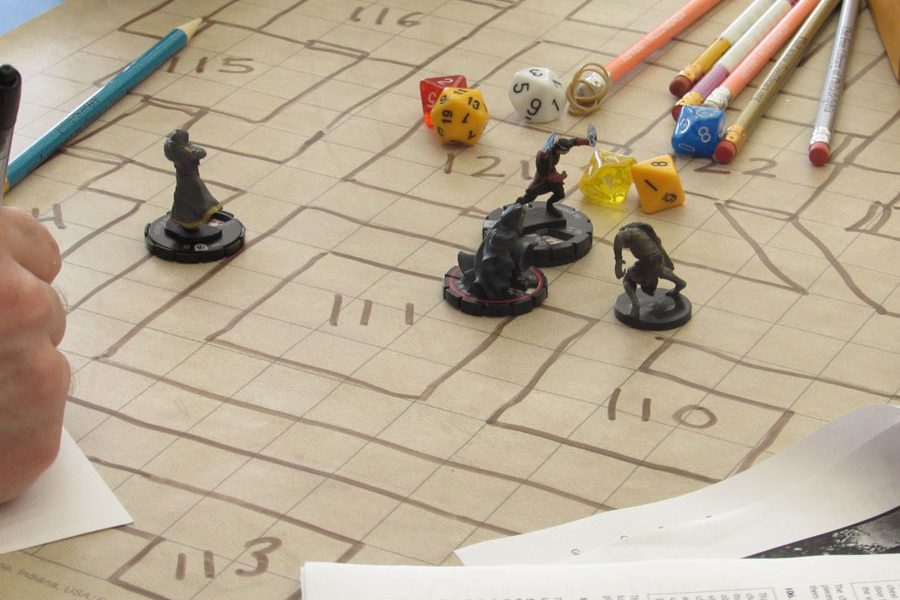
Players move their characters into position after rolling the set of die to determine the effectiveness of their attacks. In this setup, a warrior, thief and wizard are fighting a zombified ape./Ruthann Alexander
Horras’ campaign was just one example of how the random world of D&D works and how the players navigate it. During the adventure, Horras notes that the players were in The Dungeon of Elemental Evil, where the party of adventurers encountered two paths, one of which was covered in a trail of blood.
Enthusiastically, the young players follow the trail of blood. At the end of the trail they discover a lethally wounded adventurer bleeding out. Before dying, the adventurer warns players of danger lurking in the door ahead.
Horras narrates that the party moved ahead to discover a zombified ape and a reanimated skeleton. Characters attack in turns, which require another dice roll is required to complete the action.
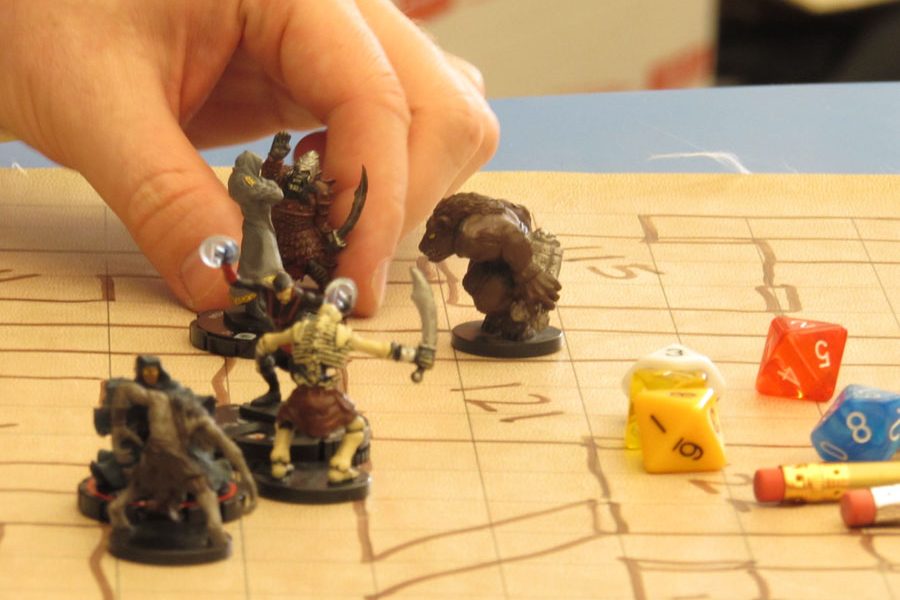
The party of adventurers faced off against more enemies as the story advanced. A skeleton, werewolf and orc attacked the players. They had to use their creativity and teamwork to defeat the enemies./Ruthann Alexander
The child role-playing as a thief now has to choose between sprinting ahead or using his bow to attack from a distance. Deciding to sprint, he hopes to score a high enough dexterity roll. The dice show 20, which gives the player enough dexterity to sprint past the enemies. Then, a little teamwork was put on display when the player who was the wizard decides to cast a shield spell to protect his party from hostile enemies.
D&D need not be completely free of humor, either. At one point, a play hid in a closet containing nothing but a crate of apples. When an enemy approached, the player chose to throw the crate of apples at the attacker instead of using his weapons.
“Seeing the kids come up with creative solutions, especially comical ones, like the kid who wanted to throw apples at the bad guys, is probably the most rewarding thing about playing D&D with them,” Horras said. “I also just enjoy sharing with them something I really love and seeing them enjoy it, too.” •









